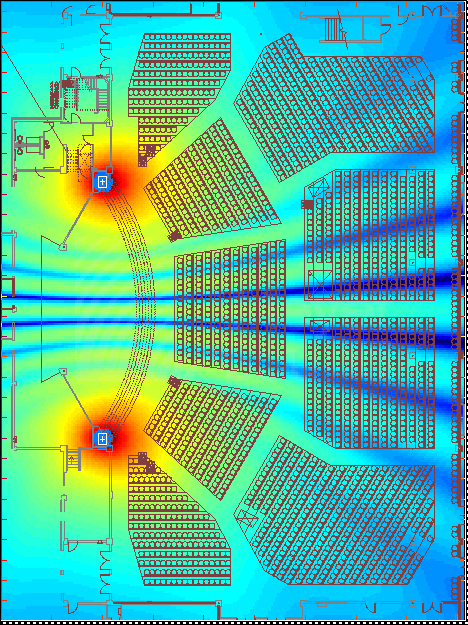
Off Center

I hinted at this a little bit the last time I was on Church Tech Weekly so today I want to touch on some of my thoughts on the mix position or FOH location for live sound reinforcement. I might have written about this in the past, and if that’s the case just consider this my current feelings on the subject.
Believe it or not, the best place for the mix position is actually debated amongst engineers more than you’d realize. I mentioned in the podcast how I don’t like FOH being off-center so let’s start there.
One of my main problems with being off center has to do with low frequency coverage. When we start spacing sound sources with overlapping coverage more than half a wavelength of their highest frequency apart, the two sources will no longer sum together in nice ways, and destructive interference often occurs instead. We typically refer to this by it’s street name: comb filtering.
To review, Comb Filtering occurs when we have a sound produced by two sources where there is a time arrival difference between the sources. When we start spacing our sources apart farther than 1/2 wavelength apart, the difference in time arrival of those two sources creates phase cancellation when we’re not standing equidistant to the two sources. As you can imagine, in the case of two loudspeakers, only a small percentage of listeners in any space are going to be able to be in a position where they’re equidistant to both speakers.
While the comb filtering in the mid- and high-frequency ranges can cause issues in some circumstances in sound reinforcement, in my experience it doesn’t become as problematic as with low frequencies. If was problematic, we’d probably all be going out of our mind at what happens to center-panned sources such as vocals. I have some theories as to why that is, but I’ll leave it for the more educated to explain that one while I talk about the potential low frequency issues.
In most large PA’s, it’s often difficult to get all low frequency sound sources close together. These might be subs, but they could also be the mains or “tops”. Let’s use subs, though, since it’s a little easier to look at.
Think about the traditional side-stacked subs. Now observe the photo above. This is a model of subs side-stacked approximately 50′ apart at 80 Hz. Notice that the distance between the subs creates areas of destructive interference within the listening area. You can see these nulls that occur as dark blue in the heat plot. The darker the color, the greater the null or cancellation.
Notice where the darkest nulls occur?
Just off-center.
If I ran models at more frequencies within the bandwidth of those subs, we’d see the nulls occur in slightly different places moving out from the center. The one thing I can guarantee, though, is that the largest nulls would all occur right off-center almost right on top of each other.
Now picture our intrepid FOH engineer mixing just off-center in the room. He’s meticulously tweaking away trying to get just the right amount of feel and low-end punch out of the subs to give the music the depth and weight it needs for emotional impact. But he’s off-center standing in the 1st null of the subs so no matter how much he cranks the low-end, he just doesn’t hear what’s happening. Meanwhile as he turns and turns the knobs trying to figure out what’s wrong, his trusty assistant standing just to the side of him in the coverage of the subs is on the verge of a bowel movement along with the other 80-90% of the audience sitting outside that first null.
OK. OK. Maybe this is a bit of an exaggeration because acoustical reflections in the room generally keep complete cancellation from happening in those nulls, but those nulls will still be an issue. If you look in that picture above again, you can see the box where our current mix position sits. Our sub configuration is quite different these days so that null isn’t nearly as deep, but I did mix for several years with that configuration and it was definitely a challenge to get the low end consistently right.
Now, this low frequency issue is a particularly sensitive issue for me because these days I spend the vast majority of my time mixing in a church, and what is the biggest sound complaint most people have in modern church’s?
That’s, right! You guessed it! Too much low frequency content.
So my personal preference for mix position is to be in the center of a two-channel/stereo system because it’s the one place where everything adds together. It’s also, theoretically, the one place where all frequencies will be audible if the system was properly designed and implemented. If I’m going to make mix decisions that impact everyone’s experience, I want to be in the place where I know I’ll be able to hear all the frequencies that would make someone uncomfortable: namely the low-end and upper-mids.
Being in the center, however, is not without its downsides. Since it’s the place where everything tends to add together, we often have what we refer to on the street as power alley. Since those subs add up real nice together right in the middle, they kick more in the center than throughout most of the room. The whole PA may also be a bit louder right in the center. Sometimes this can lead to some engineers undercooking things since they are getting so much more than the other 90-98% of the room.
Another issue I’ve experienced dead in the middle is the comb-filtering that happens in the mid- and high-frequencies can become an issue from just the little bit of movement you naturally do when standing. It’s not always the case, but I have had been in situations where standing right in the middle of the left and right PA stacks has been weird.
Some engineers dislike the middle just because of the simple fact that barely anyone listening is in that center sweet spot in the room. So part of the thought process is to get off-center to be more in the real world of the rest of the audience.
These are all fine reasons to dislike mixing in the middle of the room, and if you’ve been mixing for a long time and know where you like to mix from, I’m not looking to change your mind. Really I just believe you should strive to mix from the place where you are most comfortable.
Personally, I think the mix position can be a bit of a moving target. You are always the only one standing where you are standing so the rest of the audience getting a different perspective than you. How different that is will vary depending on each situation. The point is there is no perfect anything. Getting outside of your mix position to listen to things and get another perspective is definitely beneficial. I even do that when I’m in the studio. However, to me that should just be a spot-check situation which makes the mix position very important to me since it’s the primary location I monitor from.
If I had to pick my ideal mix position, it’d be on the floor and not under a balcony about 2/3 of the way back in the room in the center of a stereo PA. In a really big room, I’d probably want to be somewhere in the 75-100′ range away from the stage. In a small room I want to be as far from the stage as possible and ideally not up against a wall.
So a few more quick thoughts on this.
If I’m too close to the stage in a big room, the stage volume could influence the mix to the point that I get it wrong for the majority of the room that doesn’t have that stage proximity. If I’m too far away, though, I could end up hearing the mix too late–remember, distance=time–so my mix moves don’t sit in the pocket anymore.
Dead in the middle between the front and back walls of the room can be problematic because it’s typically where room mode issues all like to party together making for more weirdness. And being too close to a wall or under a balcony also typically causes weird frequency buildup issues. Being under a balcony would probably be a little easier to deal with, in my opinion, than being up against the back wall, though, because fills might be used to help with the issues. On the other hand, you can’t really do anything about the bass build-up when you’re against a wall, though. Although, I’ve also been in situations where having that bass bump from the wall was nice.
I guess the bottomline is I believe as a mixer you have to find the spot where you’re most comfortable mixing. There might be some better positions than others, but the ideal ones get debated. Given that, I think it’s important to understand what you’re trading by setting up in one spot over another. All too often I see churches that arbitrarily just stick the mix position somewhere that looks relatively OK. In my opinion, that’s a foolish move considering the person mixing will have an effect in some way on every person in the room’s experience.
Now there’s one last thing I want to say on all this. A few years ago I did some research on where the big chair engineers I admire have their mix position. I can’t remember seeing one of their consoles set up off-center. I’m just saying….

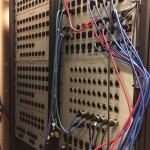 Next Post
Next Post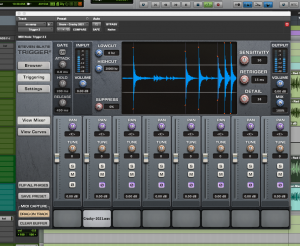
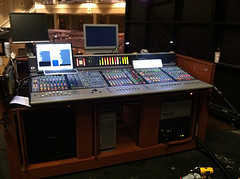

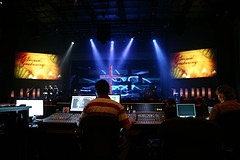



This isn’t really debated at all amongst sound engineers.
The only people that think it’s better to be off center are the people who can’t be center. Other than that everyone agrees center is the best position.